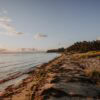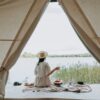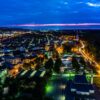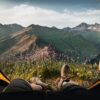Brandenburg offers more than picturesque lakes, vast landscapes, and idyllic countryside. Here, travelers can explore abandoned factories, gigantic open-cast mining machines, and well-planned factory settlements. Industry culture in Brandenburg.
The region is a true paradise for history enthusiasts, offering numerous museums and attractions that take you back in time to when Brandenburg was a significant industrial hub. From coal to bricks, glass, porcelain, hats, and sewing machines – this is where products were once manufactured, and still highly sought after in Berlin and worldwide. Why not take a camper van on a journey through time and explore these nearly forgotten industrial worlds? The Tourist Network Industrial Culture offers an exciting 450-kilometer-long route for five to six days – an alternative, but undoubtedly worthwhile travel tip for spring and summer.
Lauchhammer: Biotowers and Art Casting Museum
The journey begins in the Lausitz Lake District, located between Berlin and Dresden. The former energy center of the GDR has undergone an impressive transformation in recent decades – from a mining district to a water paradise. The enormous open-cast mining holes have been transformed into idyllic lakes with beaches, marinas, cycling paths, and campsites. Nevertheless, some relics of the lignite coal past have been preserved as industrial monuments.
One of the most remarkable industrial monuments is the Biotowers, located just outside Lauchhammer, approximately halfway between Dresden and Cottbus. For wanderers who are not familiar with them, one might wonder about the history and purpose of this fortress-like structure. The 24 brick towers are remnants of a once huge coking plant and are unique worldwide. Visitors can climb the towers with a personal guide and enjoy the view of the site and the surroundings from the glazed observation platform. Alternatively, the towers can be visited individually, and an audio guide through a free app provides interesting details.

But the town of Lauchhammer itself is also worth a stop. It was once known for its excellent art casting works, whose products were sold all over the world. The local Art Casting Museum tells the story of this glorious past with a unique collection of around 2800 reliefs and models made of plaster and metal.
Extra tip for campers: A picturesque pitch is available only about 20 minutes away from the Art Casting Museum. It’s not only idyllic but also surrounded by pine forests and located directly by the lake – the camping site Themencamping Grünewalder Lauch. And the best part: The beach is only a few meters away, and there’s even a sauna.
Großräschen: IBA Terraces
The next stop on the tour takes you northeast to the IBA Terraces, located about a half-hour drive away. The distinctive blue building cubes connected at the Großräschener Lake were created during the International Building Exhibition (IBA) Fürst-Pückler-Land. It provided essential impulses for the structural change in the region between 2000 and 2010. At that time, the Großräschener Lake was indeed still a vision of the future, and the terraces offered a dreary view of the former open-cast mining landscape. It wasn’t until 2007 that the flooding of the lake began.
Today, the open-cast mine is merely a distant memory, and visitors can enjoy coffee and cake while admiring the glittering lake with its well-kept shores and pier. Another typical tradition of the region is sipping a glass of wine from one of the area’s vineyards. For those interested, the visitor center is recommended, as it provides information about the history of the IBA in Germany, mining, and the future of the town of Großräschen.
Extra tip for campers: At the sandy beach, there are five simple pitches for campers available, which might lack comfort but boast a direct view of the lake.
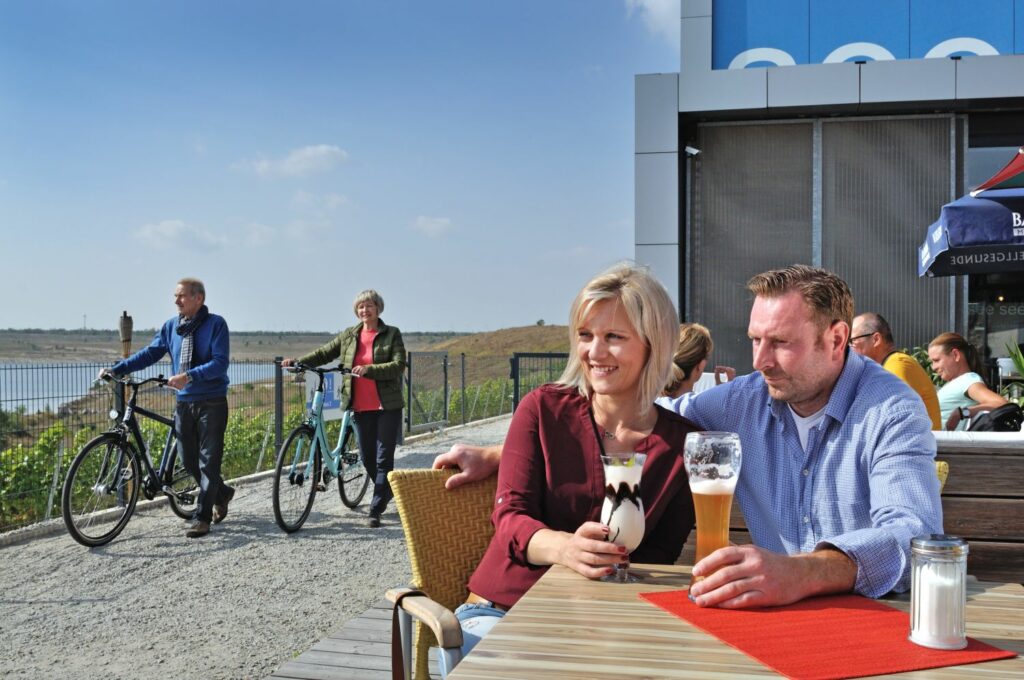
Lichterfeld: F60 Visitor Mine
Only a half-hour drive east is one of the most famous locations of lignite coal mining in Brandenburg: the F60 Visitor Mine in Lichterfeld. The gigantic steel colossus, once used as an overburden conveyor bridge in the Klettwitz-Nord open-cast mine, weighs an incredible 11,000 tons and stretches over a length of 500 meters and a width of 200 meters.
Although the open-cast mine is long gone, the Bergheider Lake, which emerged in its place, now offers an idyllic setting for swimming and boating. Visitors have the opportunity to climb the “Lying Eiffel Tower of Lausitz” on guided tours and enjoy a breathtaking view of the surrounding lake landscape from a height of 74 meters.
Extra tip for campers: There are 20 simple pitches available on-site.

Rüdersdorf: Museum Park
After an approximately one-and-a-half-hour drive north, passing the Niederlausitzer Landrücken and Dahme-Heideseen Nature Parks, you’ll reach the mining town of Rüdersdorf, east of Berlin. Here, the impressive Museum Park of Rüdersdorf covers a 17-hectare area. It is the only historic lime and mining facility of this size that has been preserved. The limestone from Rüdersdorf was indispensable for the growing metropolis of Berlin and was used for significant buildings such as the Brandenburg Gate, the Olympic Stadium, and the Berlin Wall.
What’s particularly impressive is the various structures of the limestone production, including the imposing shaft oven battery with 18 chimneys, which also served as a filming location and is known as the “Cathedral of Lime.” Visitors can explore the park individually or take part in guided tours, including geological excursions with fossil hunting and Land Rover tours in the active open-cast mine.
Extra tip for campers: The Museum Park has a parking lot with free pitches and a supply and disposal station with a coin machine.


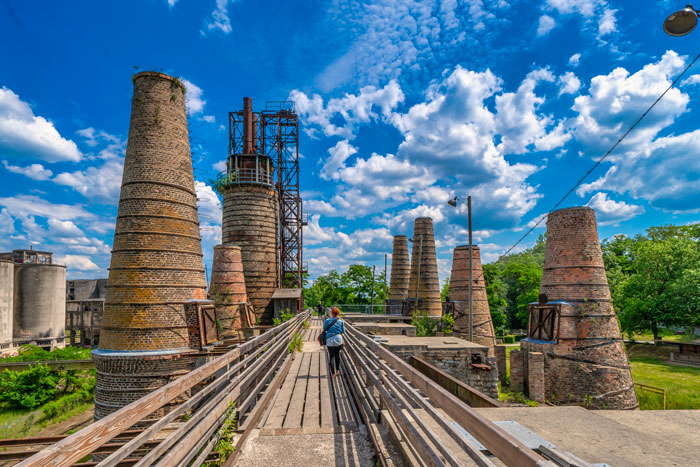
Zehdenick: Mildenberg Brickyard Park
Just 90 kilometers further north, visitors will find the Mildenberg Brickyard Park in Zehdenick, surrounded by a clay pit landscape. Surprisingly, this landscape is incredibly picturesque. A trip here is not only a fascinating journey back in time but also highly educational, as you learn a lot about the brick industry. Zehdenick was once the largest center of brick production in Europe and supplied about 30 to 40 percent of the bricks for Berlin’s apartment buildings in the late 19th century. In the ring kilns and machine halls of the park, visitors can experience the hard life of the workers from the past and even try their hand at brickmaking.
Extra tip for campers: Just a few steps away is the Camping Marina Alter Hafen. Here, pitches are available directly by the Havel River. If you feel like it, you can rent canoes and enjoy a delightful paddling experience.

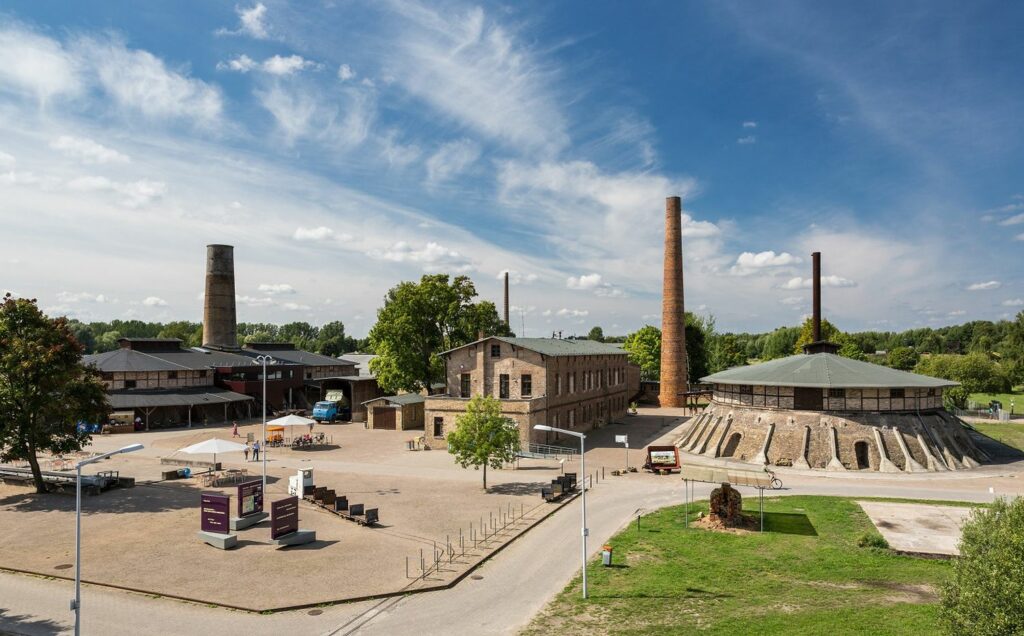
Wittenberge: Industrial History of the City
The journey should continue to Wittenberge. The city on the Elbe River was formerly known as the “City of Sewing Machines” and produced millions of sewing machines under the names Singer, Veritas, and Naumann. With the free audio guide, “Industrial Culture Wittenberge”, you can experience the history up close. But not only sewing machines are the focus here; the clock tower of the sewing machine factory, the historic locomotive shed, the pulp and viscose factory, the city museum, and the Old Oil Mill are also worth a visit.
By the way, today, the Old Oil Mill is a hotel with a mega wellness area. Just in case you want to give the highly praised camper van a rest for a night.
Extra tip for campers: If you’re traveling with your camper van, you can stay at the Nedwighafen motorhome site. The site offers electricity and water connections, as well as showers and toilets. And if you need a break from camper life, you can take a boat trip along the Elbe River. Sounds great, doesn’t it?
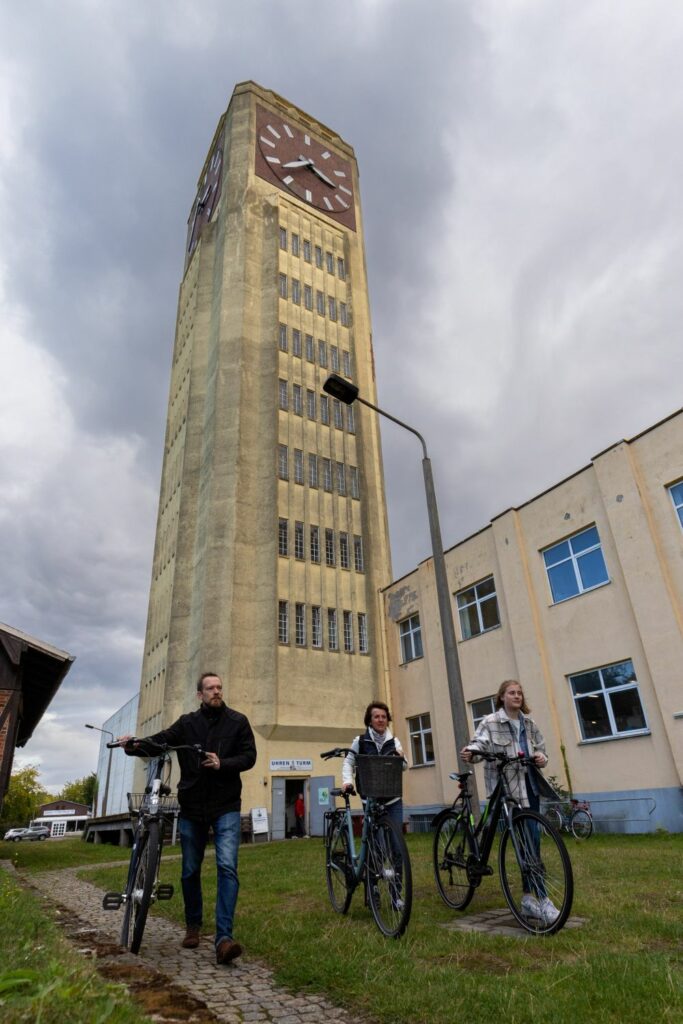
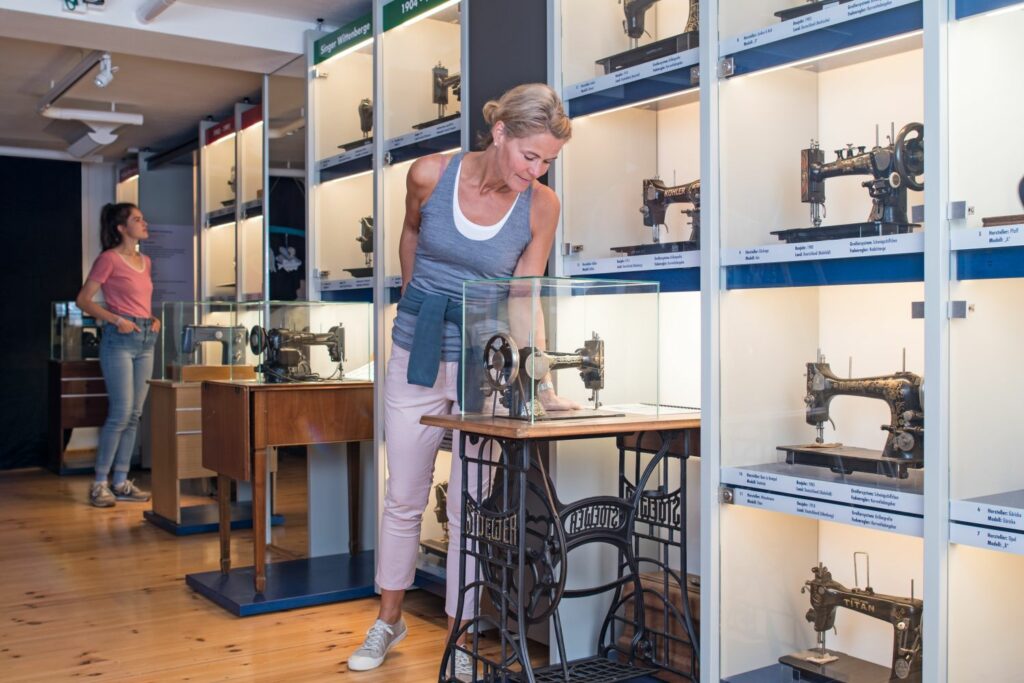

For more information about industrial cultural sites in Brandenburg, visit the Tourist Network Industrial Culture’s website.
